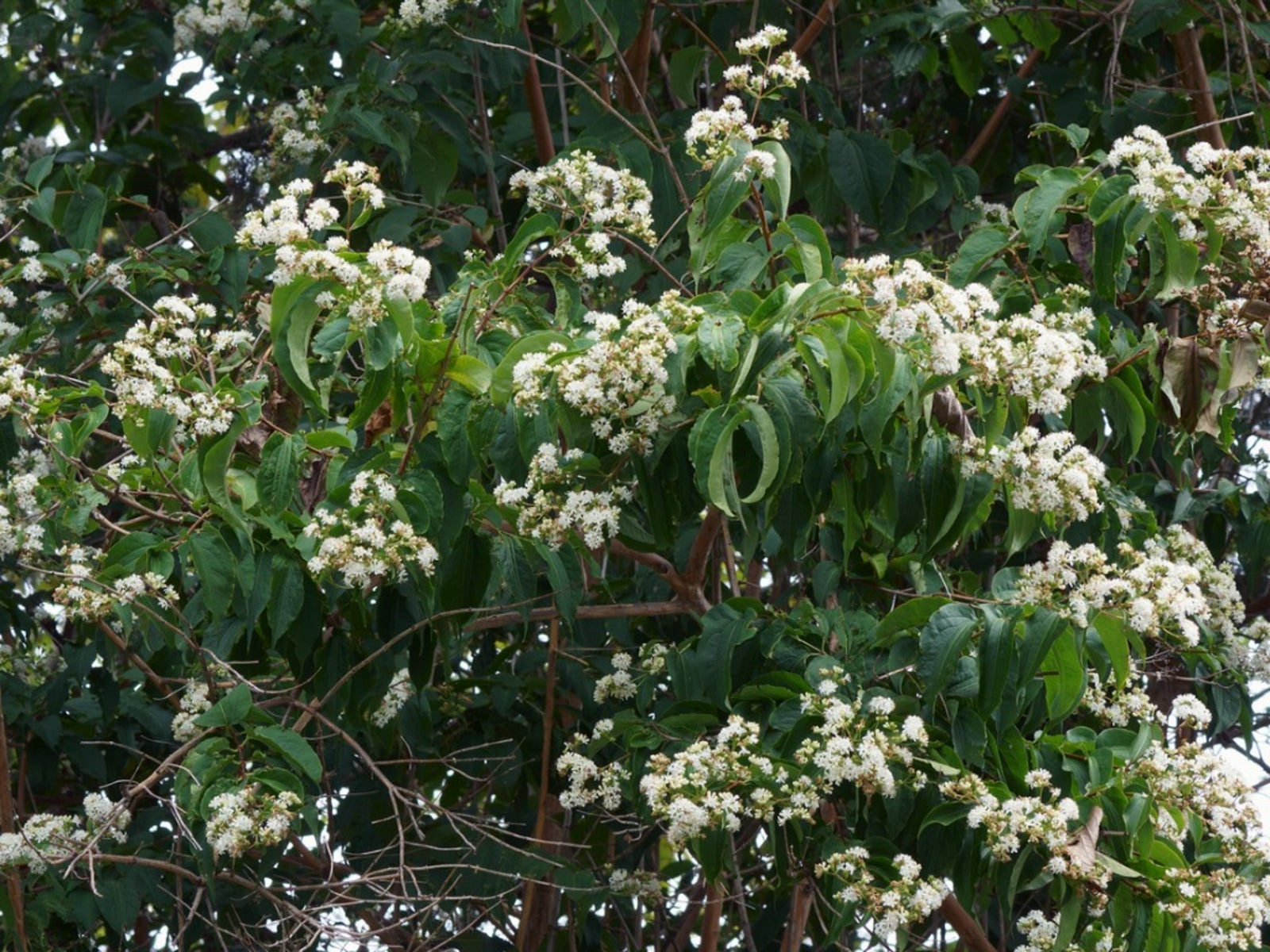Seven Son Flower Info – What Is A Seven Son Flower


A member of the honeysuckle family, the seven son flower earned its interesting name for its clusters of seven buds. It was first introduced to American gardeners in 1980, where it is sometimes referred to as “autumn lilac” or “hardy crapemyrtle.” Read on to learn more about this interesting plant.
Seven Son Flower Info
What is a seven son flower? Native to China, seven son flower (Heptacodium miconioides) is classified as a large shrub or small tree with a vase-like growth habit and a mature height of 15 to 20 feet (3-4 m.). Tiny, white, sweet-scented flowers provide contrast against the dark green foliage in late summer to early fall, followed by cherry red seed capsules that are even showier than the blooms. The peeling, whitish tan bark on mature trees adds interesting color and texture to the garden during the winter months. Seven son flower is easy to grow, and the plant doesn’t tend to be invasive. However, suckers may be a frequent problem for young trees.
Growing Seven Son Trees
Seven son trees don’t tolerate extreme cold or heat, but growing seven son trees is easy if you live in USDA plant hardiness zones 5 through 9. This lovely little tree shows its colors best in full sun but tolerates light shade. It is adaptable to a wide range of soil conditions, although it prefers fertile, moist, well-drained soil. While growing seven son trees is possible via seeds or cuttings, most gardeners prefer to plant young, nursery-grown trees.
Heptacodium Seven Son Care
Heptacodium seven son care is almost non-existent, but here are a few tips for growing a healthy plant: Keep the soil moist until the tree is established. Thereafter, the seven son tree is drought tolerant, but benefits from an occasional drink of water during hot, dry weather. Heptacodium generally requires no fertilizer, but if your soil is poor, you can feed the tree lightly in spring using a plant food formulated for woody plants. A rose fertilizer also works well. Seven son flower doesn’t require much pruning, but you can prune lightly to remove wayward growth in late winter or early spring. You can also prune to create a single-trunk tree or keep multiple trunks for a natural looking shrub shape. Remove suckers until the main stem is well established.
Gardening tips, videos, info and more delivered right to your inbox!
Sign up for the Gardening Know How newsletter today and receive a free copy of our e-book "How to Grow Delicious Tomatoes".

A Credentialed Garden Writer, Mary H. Dyer was with Gardening Know How in the very beginning, publishing articles as early as 2007.
-
 Looking For Plants To Give You The Soft And Fuzzies? Try These 5 Fuzzy Leaf Plant Options
Looking For Plants To Give You The Soft And Fuzzies? Try These 5 Fuzzy Leaf Plant OptionsLovers of texture, drama, silver foliage and tactile plants will adore these special sensory garden additions. These fuzzy leaf plant options will leave you all aglow
By Susan Albert
-
 Get Ready For A Summer Of Hummers! Grow These Full Sun Hummingbird Plants and Flowers
Get Ready For A Summer Of Hummers! Grow These Full Sun Hummingbird Plants and FlowersIf you’re lucky enough to enjoy a sunny backyard, make sure you are maxing out on your pollinator opportunities and grow these full sun hummingbird plants and flowers
By Tonya Barnett